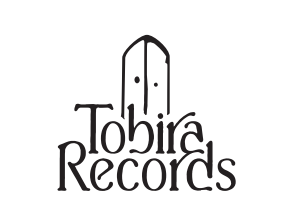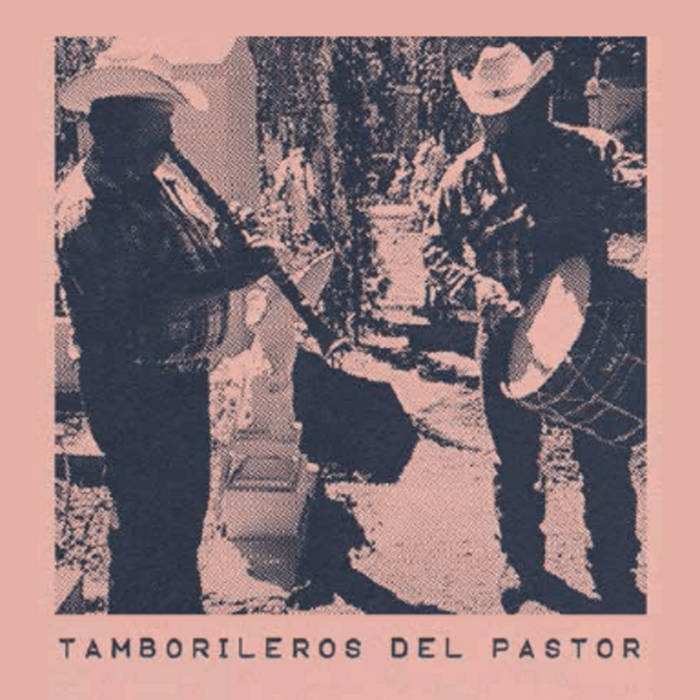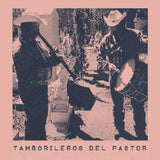クイックビュー
{"id":9040583950586,"title":"DJ Marcelle\/Another Nice Mess \/\/ Sorry, No Service LP","handle":"dj-marcelle-another-nice-mess-sorry-no-service-lp","description":"\u003cp\u003eオランダ・アムステルダムのアウトサイダー・ダブ作家DJ Marcelle \/ Another Nice Messが、2025年11月にベルギーの実験レーベルCortizonaからリリースしたレコードです。\u003c\/p\u003e\n\u003cp\u003eフロア棒立ち系コラージュ・ダブ9曲を収録。\u003c\/p\u003e\n\u003cp\u003e※デジタル音源を無料でお送りいたしますのでお気軽にご連絡くださいませ\u003c\/p\u003e\n\u003cp\u003e\u003ciframe src=\"https:\/\/bandcamp.com\/EmbeddedPlayer\/album=708662571\/size=large\/bgcol=ffffff\/linkcol=0687f5\/tracklist=false\/artwork=none\/track=3441543937\/transparent=true\/\" style=\"border: 0; width: 100%; height: 120px;\"\u003e\u003c\/iframe\u003e\u003c\/p\u003e\n\u003cp\u003e\u003ciframe src=\"https:\/\/bandcamp.com\/EmbeddedPlayer\/album=708662571\/size=large\/bgcol=ffffff\/linkcol=0687f5\/tracklist=false\/artwork=none\/transparent=true\/\" style=\"border: 0; width: 100%; height: 120px;\"\u003e\u003c\/iframe\u003e\u003c\/p\u003e\n\u003cp\u003eレーベルその他作品は\u003ca href=\"https:\/\/tobirarecords.com\/collections\/cortizona\"\u003eこちら\u003c\/a\u003e\u003cspan\u003e \u003c\/span\u003e\/\/\/ Click \u003ca href=\"https:\/\/tobirarecords.com\/collections\/cortizona\"\u003ehere\u003c\/a\u003e to see more Cortizona releases available at Tobira. \u003c\/p\u003e\n\u003cp\u003e---------------------------\u003c\/p\u003e\n\u003cp\u003e\u003cspan\u003e\u003cmeta charset=\"utf-8\"\u003eAsk us for digital files.\u003cbr\u003e12\" black vinyl.\u003cbr\u003eFollowup to the album '\u003cmeta charset=\"utf-8\"\u003eSorry, No Silence', also released in 2025. \u003c\/span\u003e\u003c\/p\u003e\n\u003cp\u003e\u003cspan\u003e\u003cstrong\u003eTracklist\u003c\/strong\u003e:\u003c\/span\u003e\u003c\/p\u003e\n\u003cp class=\"MsoNormal\"\u003e\u003cspan lang=\"EN-US\" style=\"mso-ansi-language: EN-US;\"\u003e1. Sorry, No Sorry 05:49\u003cbr\u003e\u003c\/span\u003e\u003cspan lang=\"EN-US\" style=\"mso-ansi-language: EN-US;\"\u003e2. The 10.23 AM From Amsterdam Lelylaan 03:09\u003cbr\u003e\u003c\/span\u003e\u003cspan lang=\"EN-US\" style=\"mso-ansi-language: EN-US;\"\u003e3. Spontaneous Gathering To Avoid Another Bob Dylan Movie 04:29\u003cbr\u003e\u003c\/span\u003e\u003cspan style=\"font-family: -apple-system, BlinkMacSystemFont, 'San Francisco', 'Segoe UI', Roboto, 'Helvetica Neue', sans-serif; font-size: 0.875rem;\"\u003e4. I Have Been Doing Some Accounting This Afternoon 03:44\u003cbr\u003e\u003c\/span\u003e\u003cspan style=\"font-family: -apple-system, BlinkMacSystemFont, 'San Francisco', 'Segoe UI', Roboto, 'Helvetica Neue', sans-serif; font-size: 0.875rem;\"\u003e5. Quidquid Latine Dictum Sit Altum Videtur 01:30\u003cbr\u003e\u003c\/span\u003e\u003cspan lang=\"EN-US\" style=\"mso-ansi-language: EN-US;\"\u003e6. Sorry, No Silence (LP version) 04:54\u003cbr\u003e\u003c\/span\u003e\u003cspan lang=\"EN-US\" style=\"mso-ansi-language: EN-US;\"\u003e7. Final Exam At The Music Academy 03:30\u003cbr\u003e\u003c\/span\u003e\u003cspan style=\"font-family: -apple-system, BlinkMacSystemFont, 'San Francisco', 'Segoe UI', Roboto, 'Helvetica Neue', sans-serif; font-size: 0.875rem;\"\u003e8. The High Synths Experiment 04:13\u003cbr\u003e\u003c\/span\u003e\u003cspan style=\"font-family: -apple-system, BlinkMacSystemFont, 'San Francisco', 'Segoe UI', Roboto, 'Helvetica Neue', sans-serif; font-size: 0.875rem;\"\u003e9. Chairs 05:55\u003c\/span\u003e\u003c\/p\u003e\n\u003cp\u003e\u003cspan\u003e++\u003c\/span\u003e\u003c\/p\u003e\n\u003cp\u003e\u003cspan\u003eAccompanying text \u003cmeta charset=\"utf-8\"\u003e \u003cspan class=\"bcTruncateMore\"\u003ewritten by Bob Nickas NYC, 10\/17\/25 :\u003c\/span\u003e \u003c\/span\u003e\u003c\/p\u003e\n\u003cp\u003e\u003cspan\u003e\u003cmeta charset=\"utf-8\"\u003e \u003cem\u003e\"Sorry no silence\u003c\/em\u003e\u003cbr\u003e\u003cem\u003eSorry no service\u003c\/em\u003e\u003cbr\u003e\u003cem\u003eno servants\u003c\/em\u003e\u003cbr\u003e\u003cem\u003eno servers\u003c\/em\u003e\u003cbr\u003e\u003cem\u003eno serpents\u003c\/em\u003e\u003cbr\u003e\u003cem\u003eno secrets\u003c\/em\u003e\u003cbr\u003e\u003cem\u003eno sequins\u003c\/em\u003e\u003cbr\u003e\u003cem\u003eno sequence\u003c\/em\u003e\u003cbr\u003e\u003cem\u003eno sevens\u003c\/em\u003e\u003cbr\u003e\u003cem\u003eno severance\u003c\/em\u003e\u003cbr\u003e\u003cem\u003eno surveillance\u003c\/em\u003e\u003cbr\u003e\u003cem\u003e(all the time, everywhere)\u003c\/em\u003e\u003cbr\u003e\u003cem\u003eno service\u003c\/em\u003e\u003cbr\u003e\u003cem\u003eno silence\u003c\/em\u003e\u003cbr\u003e\u003cem\u003eno silencers\u003c\/em\u003e\u003cbr\u003e\u003cbr\u003e\u003cem\u003eLaurel \u0026amp; Hardy slip in through the side door. Lay their hats on the table.\u003c\/em\u003e\u003cbr\u003e\u003cem\u003eStan looks bewildered. Ollie is carrying a round green melon in his right\u003c\/em\u003e\u003cbr\u003e\u003cem\u003ehand, fingers inserted as if it’s a bowling ball. The\u003c\/em\u003e\u003cspan class=\"bcTruncateMore\"\u003e\u003cem\u003e record begins to play…\u003c\/em\u003e\u003cbr\u003e\u003cem\u003eStan: This opening track’s a real banger.\u003c\/em\u003e\u003cbr\u003e\u003cem\u003eOllie: Cough syrup and speed.\u003c\/em\u003e\u003cbr\u003e\u003cem\u003eStan: [staring into space] Well, there’s a mix for you.\u003c\/em\u003e\u003cbr\u003e\u003cem\u003eOllie: This next one positively percolates.\u003c\/em\u003e\u003cbr\u003e\u003cem\u003eStan: The 10:23 from Amsterdam. We nearly missed it.\u003c\/em\u003e\u003cbr\u003e\u003cem\u003eOllie: And whose fault was that? Another nice mess.\u003c\/em\u003e\u003cbr\u003e\u003cem\u003eStan: Crowds frighten me. Sorry ...\u003c\/em\u003e\u003cbr\u003e\u003cem\u003eOllie: She’s not afraid of silliness and mischief, that’s for sure.\u003c\/em\u003e\u003cbr\u003e\u003cem\u003eStan: Neither are we.\u003c\/em\u003e\u003cbr\u003e\u003cem\u003e[a continuous undertow of chatter]\u003c\/em\u003e\u003cbr\u003e\u003cem\u003eStan: I’ve been doing some accounting this afternoon ...\u003c\/em\u003e\u003cbr\u003e\u003cem\u003eOllie: Nothing ever adds up with you.\u003c\/em\u003e\u003cbr\u003e\u003cem\u003eStan: Watermelon on a turntable.\u003c\/em\u003e\u003cbr\u003e\u003cem\u003eOllie: When humor and anger collide?\u003c\/em\u003e\u003cbr\u003e\u003cem\u003eStan: This turntable kills fascists.\u003c\/em\u003e\u003cbr\u003e\u003cem\u003e[cheering]\u003c\/em\u003e\u003cbr\u003e\u003cem\u003eOllie: Where’s Bryn Jones when we need him most?\u003c\/em\u003e\u003cbr\u003e\u003cem\u003eStan: Well, he isn’t taking his final at the music academy.\u003c\/em\u003e\u003cbr\u003e\u003cem\u003e[laughter]\u003c\/em\u003e\u003cbr\u003e\u003cem\u003eOllie: This track is metallic and rubbery.\u003c\/em\u003e\u003cbr\u003e\u003cem\u003eStan: Regimented with bounce. Elastic.\u003c\/em\u003e\u003cbr\u003e\u003cem\u003eOllie: Synths oscillate continuously, with clank.\u003c\/em\u003e\u003cbr\u003e\u003cem\u003e[thump, thump, thump, and a wavering background]\u003c\/em\u003e\u003cbr\u003e\u003cem\u003eStan: Can we sit down now?\u003c\/em\u003e\u003cbr\u003e\u003cem\u003eOllie: Musical chairs.\u003c\/em\u003e\u003cbr\u003e\u003cem\u003eStan: What do we like to do in an unfamiliar town?\u003c\/em\u003e\u003cbr\u003e\u003cem\u003eOllie: We go to the supermarket and buy tea bags.\u003c\/em\u003e\u003cbr\u003e\u003cem\u003eStan: We get on a bus. No idea where it’s going.\u003c\/em\u003e\u003cbr\u003e\u003cem\u003eOllie: And it doesn’t matter.\u003c\/em\u003e\u003cbr\u003e\u003cem\u003eStan: The bus driver is our DJ. ... The bus driver is our DJ.\u003c\/em\u003e\u003cbr\u003e\u003cem\u003eOllie: Now you’re repeating yourself.\u003c\/em\u003e\u003cbr\u003e\u003cem\u003eStan: This is clearly …\u003c\/em\u003e\u003cbr\u003e\u003cbr\u003e\u003cem\u003eRepetition in the echo.\u003c\/em\u003e\u003cbr\u003e\u003cem\u003eRepetition in the layers.\u003c\/em\u003e\u003cbr\u003e\u003cem\u003eRepetition in Kaunas.\u003c\/em\u003e\u003cbr\u003e\u003cem\u003eRepetition in the craters.\u003c\/em\u003e\u003cbr\u003e\u003cem\u003eRepetition in cruelty.\u003c\/em\u003e\u003cbr\u003e\u003cem\u003eRepetition in Berlin.\u003c\/em\u003e\u003cbr\u003e\u003cem\u003eRepetition in the protest and we’re never gonna lose it.\u003c\/em\u003e\u003cbr\u003e\u003cem\u003eRepetition in Latin, repetition in Cyrillic.\u003c\/em\u003e\u003cbr\u003e\u003cem\u003eRepetition in history.\u003c\/em\u003e\u003cbr\u003e\u003cem\u003eRepetition in the hotel amnesia.\u003c\/em\u003e\u003cbr\u003e\u003cem\u003eRepetition in China, repetition in Russia.\u003c\/em\u003e\u003cbr\u003e\u003cem\u003eRepetition in velocity.\u003c\/em\u003e\u003cbr\u003e\u003cem\u003eRepetition everywhere.\u003c\/em\u003e\u003cbr\u003e\u003cem\u003eRepetition in the music and we’re never gonna lose it.\u003c\/em\u003e\u003cbr\u003e\u003cem\u003eRepetition in the protest and we’re never gonna lose it.\"\u003c\/em\u003e\u003cbr\u003e\u003c\/span\u003e\u003c\/span\u003e\u003c\/p\u003e\n\u003cp\u003e\u003cspan\u003eArtist : DJ Marcelle\/Another Nice Mess\u003c\/span\u003e\u003c\/p\u003e\n\u003cp\u003e\u003cspan\u003eLabel : Cortizona\u003c\/span\u003e\u003c\/p\u003e\n\u003cp\u003e\u003cspan\u003ecat no : cortizona 033\u003c\/span\u003e\u003c\/p\u003e\n\u003cp\u003e\u003cspan\u003eRelease date : 21st November 2025\u003c\/span\u003e\u003c\/p\u003e","published_at":"2025-12-27T14:38:36+09:00","created_at":"2025-12-27T09:49:14+09:00","vendor":"Tobira Records","type":"","tags":["cortizona","hiphop \/ funk","lp","monooto","new","strange beats"],"price":579000,"price_min":579000,"price_max":579000,"available":true,"price_varies":false,"compare_at_price":null,"compare_at_price_min":0,"compare_at_price_max":0,"compare_at_price_varies":false,"variants":[{"id":48162319139066,"title":"Default Title","option1":"Default Title","option2":null,"option3":null,"sku":null,"requires_shipping":true,"taxable":true,"featured_image":null,"available":true,"name":"DJ Marcelle\/Another Nice Mess \/\/ Sorry, No Service LP","public_title":null,"options":["Default Title"],"price":579000,"weight":430,"compare_at_price":null,"inventory_management":"shopify","barcode":"","requires_selling_plan":false,"selling_plan_allocations":[]}],"images":["\/\/tobirarecords.com\/cdn\/shop\/files\/no1_b3609a69-3542-47bd-be8c-4ef5f5b49e45.jpg?v=1766796363","\/\/tobirarecords.com\/cdn\/shop\/files\/no2_cf9b19b6-148e-4288-a10d-97fdfa4096c6.jpg?v=1766796364"],"featured_image":"\/\/tobirarecords.com\/cdn\/shop\/files\/no1_b3609a69-3542-47bd-be8c-4ef5f5b49e45.jpg?v=1766796363","options":["Title"],"media":[{"alt":null,"id":37905947853050,"position":1,"preview_image":{"aspect_ratio":1.0,"height":700,"width":700,"src":"\/\/tobirarecords.com\/cdn\/shop\/files\/no1_b3609a69-3542-47bd-be8c-4ef5f5b49e45.jpg?v=1766796363"},"aspect_ratio":1.0,"height":700,"media_type":"image","src":"\/\/tobirarecords.com\/cdn\/shop\/files\/no1_b3609a69-3542-47bd-be8c-4ef5f5b49e45.jpg?v=1766796363","width":700},{"alt":null,"id":37905947885818,"position":2,"preview_image":{"aspect_ratio":1.412,"height":850,"width":1200,"src":"\/\/tobirarecords.com\/cdn\/shop\/files\/no2_cf9b19b6-148e-4288-a10d-97fdfa4096c6.jpg?v=1766796364"},"aspect_ratio":1.412,"height":850,"media_type":"image","src":"\/\/tobirarecords.com\/cdn\/shop\/files\/no2_cf9b19b6-148e-4288-a10d-97fdfa4096c6.jpg?v=1766796364","width":1200}],"requires_selling_plan":false,"selling_plan_groups":[],"content":"\u003cp\u003eオランダ・アムステルダムのアウトサイダー・ダブ作家DJ Marcelle \/ Another Nice Messが、2025年11月にベルギーの実験レーベルCortizonaからリリースしたレコードです。\u003c\/p\u003e\n\u003cp\u003eフロア棒立ち系コラージュ・ダブ9曲を収録。\u003c\/p\u003e\n\u003cp\u003e※デジタル音源を無料でお送りいたしますのでお気軽にご連絡くださいませ\u003c\/p\u003e\n\u003cp\u003e\u003ciframe src=\"https:\/\/bandcamp.com\/EmbeddedPlayer\/album=708662571\/size=large\/bgcol=ffffff\/linkcol=0687f5\/tracklist=false\/artwork=none\/track=3441543937\/transparent=true\/\" style=\"border: 0; width: 100%; height: 120px;\"\u003e\u003c\/iframe\u003e\u003c\/p\u003e\n\u003cp\u003e\u003ciframe src=\"https:\/\/bandcamp.com\/EmbeddedPlayer\/album=708662571\/size=large\/bgcol=ffffff\/linkcol=0687f5\/tracklist=false\/artwork=none\/transparent=true\/\" style=\"border: 0; width: 100%; height: 120px;\"\u003e\u003c\/iframe\u003e\u003c\/p\u003e\n\u003cp\u003eレーベルその他作品は\u003ca href=\"https:\/\/tobirarecords.com\/collections\/cortizona\"\u003eこちら\u003c\/a\u003e\u003cspan\u003e \u003c\/span\u003e\/\/\/ Click \u003ca href=\"https:\/\/tobirarecords.com\/collections\/cortizona\"\u003ehere\u003c\/a\u003e to see more Cortizona releases available at Tobira. \u003c\/p\u003e\n\u003cp\u003e---------------------------\u003c\/p\u003e\n\u003cp\u003e\u003cspan\u003e\u003cmeta charset=\"utf-8\"\u003eAsk us for digital files.\u003cbr\u003e12\" black vinyl.\u003cbr\u003eFollowup to the album '\u003cmeta charset=\"utf-8\"\u003eSorry, No Silence', also released in 2025. \u003c\/span\u003e\u003c\/p\u003e\n\u003cp\u003e\u003cspan\u003e\u003cstrong\u003eTracklist\u003c\/strong\u003e:\u003c\/span\u003e\u003c\/p\u003e\n\u003cp class=\"MsoNormal\"\u003e\u003cspan lang=\"EN-US\" style=\"mso-ansi-language: EN-US;\"\u003e1. Sorry, No Sorry 05:49\u003cbr\u003e\u003c\/span\u003e\u003cspan lang=\"EN-US\" style=\"mso-ansi-language: EN-US;\"\u003e2. The 10.23 AM From Amsterdam Lelylaan 03:09\u003cbr\u003e\u003c\/span\u003e\u003cspan lang=\"EN-US\" style=\"mso-ansi-language: EN-US;\"\u003e3. Spontaneous Gathering To Avoid Another Bob Dylan Movie 04:29\u003cbr\u003e\u003c\/span\u003e\u003cspan style=\"font-family: -apple-system, BlinkMacSystemFont, 'San Francisco', 'Segoe UI', Roboto, 'Helvetica Neue', sans-serif; font-size: 0.875rem;\"\u003e4. I Have Been Doing Some Accounting This Afternoon 03:44\u003cbr\u003e\u003c\/span\u003e\u003cspan style=\"font-family: -apple-system, BlinkMacSystemFont, 'San Francisco', 'Segoe UI', Roboto, 'Helvetica Neue', sans-serif; font-size: 0.875rem;\"\u003e5. Quidquid Latine Dictum Sit Altum Videtur 01:30\u003cbr\u003e\u003c\/span\u003e\u003cspan lang=\"EN-US\" style=\"mso-ansi-language: EN-US;\"\u003e6. Sorry, No Silence (LP version) 04:54\u003cbr\u003e\u003c\/span\u003e\u003cspan lang=\"EN-US\" style=\"mso-ansi-language: EN-US;\"\u003e7. Final Exam At The Music Academy 03:30\u003cbr\u003e\u003c\/span\u003e\u003cspan style=\"font-family: -apple-system, BlinkMacSystemFont, 'San Francisco', 'Segoe UI', Roboto, 'Helvetica Neue', sans-serif; font-size: 0.875rem;\"\u003e8. The High Synths Experiment 04:13\u003cbr\u003e\u003c\/span\u003e\u003cspan style=\"font-family: -apple-system, BlinkMacSystemFont, 'San Francisco', 'Segoe UI', Roboto, 'Helvetica Neue', sans-serif; font-size: 0.875rem;\"\u003e9. Chairs 05:55\u003c\/span\u003e\u003c\/p\u003e\n\u003cp\u003e\u003cspan\u003e++\u003c\/span\u003e\u003c\/p\u003e\n\u003cp\u003e\u003cspan\u003eAccompanying text \u003cmeta charset=\"utf-8\"\u003e \u003cspan class=\"bcTruncateMore\"\u003ewritten by Bob Nickas NYC, 10\/17\/25 :\u003c\/span\u003e \u003c\/span\u003e\u003c\/p\u003e\n\u003cp\u003e\u003cspan\u003e\u003cmeta charset=\"utf-8\"\u003e \u003cem\u003e\"Sorry no silence\u003c\/em\u003e\u003cbr\u003e\u003cem\u003eSorry no service\u003c\/em\u003e\u003cbr\u003e\u003cem\u003eno servants\u003c\/em\u003e\u003cbr\u003e\u003cem\u003eno servers\u003c\/em\u003e\u003cbr\u003e\u003cem\u003eno serpents\u003c\/em\u003e\u003cbr\u003e\u003cem\u003eno secrets\u003c\/em\u003e\u003cbr\u003e\u003cem\u003eno sequins\u003c\/em\u003e\u003cbr\u003e\u003cem\u003eno sequence\u003c\/em\u003e\u003cbr\u003e\u003cem\u003eno sevens\u003c\/em\u003e\u003cbr\u003e\u003cem\u003eno severance\u003c\/em\u003e\u003cbr\u003e\u003cem\u003eno surveillance\u003c\/em\u003e\u003cbr\u003e\u003cem\u003e(all the time, everywhere)\u003c\/em\u003e\u003cbr\u003e\u003cem\u003eno service\u003c\/em\u003e\u003cbr\u003e\u003cem\u003eno silence\u003c\/em\u003e\u003cbr\u003e\u003cem\u003eno silencers\u003c\/em\u003e\u003cbr\u003e\u003cbr\u003e\u003cem\u003eLaurel \u0026amp; Hardy slip in through the side door. Lay their hats on the table.\u003c\/em\u003e\u003cbr\u003e\u003cem\u003eStan looks bewildered. Ollie is carrying a round green melon in his right\u003c\/em\u003e\u003cbr\u003e\u003cem\u003ehand, fingers inserted as if it’s a bowling ball. The\u003c\/em\u003e\u003cspan class=\"bcTruncateMore\"\u003e\u003cem\u003e record begins to play…\u003c\/em\u003e\u003cbr\u003e\u003cem\u003eStan: This opening track’s a real banger.\u003c\/em\u003e\u003cbr\u003e\u003cem\u003eOllie: Cough syrup and speed.\u003c\/em\u003e\u003cbr\u003e\u003cem\u003eStan: [staring into space] Well, there’s a mix for you.\u003c\/em\u003e\u003cbr\u003e\u003cem\u003eOllie: This next one positively percolates.\u003c\/em\u003e\u003cbr\u003e\u003cem\u003eStan: The 10:23 from Amsterdam. We nearly missed it.\u003c\/em\u003e\u003cbr\u003e\u003cem\u003eOllie: And whose fault was that? Another nice mess.\u003c\/em\u003e\u003cbr\u003e\u003cem\u003eStan: Crowds frighten me. Sorry ...\u003c\/em\u003e\u003cbr\u003e\u003cem\u003eOllie: She’s not afraid of silliness and mischief, that’s for sure.\u003c\/em\u003e\u003cbr\u003e\u003cem\u003eStan: Neither are we.\u003c\/em\u003e\u003cbr\u003e\u003cem\u003e[a continuous undertow of chatter]\u003c\/em\u003e\u003cbr\u003e\u003cem\u003eStan: I’ve been doing some accounting this afternoon ...\u003c\/em\u003e\u003cbr\u003e\u003cem\u003eOllie: Nothing ever adds up with you.\u003c\/em\u003e\u003cbr\u003e\u003cem\u003eStan: Watermelon on a turntable.\u003c\/em\u003e\u003cbr\u003e\u003cem\u003eOllie: When humor and anger collide?\u003c\/em\u003e\u003cbr\u003e\u003cem\u003eStan: This turntable kills fascists.\u003c\/em\u003e\u003cbr\u003e\u003cem\u003e[cheering]\u003c\/em\u003e\u003cbr\u003e\u003cem\u003eOllie: Where’s Bryn Jones when we need him most?\u003c\/em\u003e\u003cbr\u003e\u003cem\u003eStan: Well, he isn’t taking his final at the music academy.\u003c\/em\u003e\u003cbr\u003e\u003cem\u003e[laughter]\u003c\/em\u003e\u003cbr\u003e\u003cem\u003eOllie: This track is metallic and rubbery.\u003c\/em\u003e\u003cbr\u003e\u003cem\u003eStan: Regimented with bounce. Elastic.\u003c\/em\u003e\u003cbr\u003e\u003cem\u003eOllie: Synths oscillate continuously, with clank.\u003c\/em\u003e\u003cbr\u003e\u003cem\u003e[thump, thump, thump, and a wavering background]\u003c\/em\u003e\u003cbr\u003e\u003cem\u003eStan: Can we sit down now?\u003c\/em\u003e\u003cbr\u003e\u003cem\u003eOllie: Musical chairs.\u003c\/em\u003e\u003cbr\u003e\u003cem\u003eStan: What do we like to do in an unfamiliar town?\u003c\/em\u003e\u003cbr\u003e\u003cem\u003eOllie: We go to the supermarket and buy tea bags.\u003c\/em\u003e\u003cbr\u003e\u003cem\u003eStan: We get on a bus. No idea where it’s going.\u003c\/em\u003e\u003cbr\u003e\u003cem\u003eOllie: And it doesn’t matter.\u003c\/em\u003e\u003cbr\u003e\u003cem\u003eStan: The bus driver is our DJ. ... The bus driver is our DJ.\u003c\/em\u003e\u003cbr\u003e\u003cem\u003eOllie: Now you’re repeating yourself.\u003c\/em\u003e\u003cbr\u003e\u003cem\u003eStan: This is clearly …\u003c\/em\u003e\u003cbr\u003e\u003cbr\u003e\u003cem\u003eRepetition in the echo.\u003c\/em\u003e\u003cbr\u003e\u003cem\u003eRepetition in the layers.\u003c\/em\u003e\u003cbr\u003e\u003cem\u003eRepetition in Kaunas.\u003c\/em\u003e\u003cbr\u003e\u003cem\u003eRepetition in the craters.\u003c\/em\u003e\u003cbr\u003e\u003cem\u003eRepetition in cruelty.\u003c\/em\u003e\u003cbr\u003e\u003cem\u003eRepetition in Berlin.\u003c\/em\u003e\u003cbr\u003e\u003cem\u003eRepetition in the protest and we’re never gonna lose it.\u003c\/em\u003e\u003cbr\u003e\u003cem\u003eRepetition in Latin, repetition in Cyrillic.\u003c\/em\u003e\u003cbr\u003e\u003cem\u003eRepetition in history.\u003c\/em\u003e\u003cbr\u003e\u003cem\u003eRepetition in the hotel amnesia.\u003c\/em\u003e\u003cbr\u003e\u003cem\u003eRepetition in China, repetition in Russia.\u003c\/em\u003e\u003cbr\u003e\u003cem\u003eRepetition in velocity.\u003c\/em\u003e\u003cbr\u003e\u003cem\u003eRepetition everywhere.\u003c\/em\u003e\u003cbr\u003e\u003cem\u003eRepetition in the music and we’re never gonna lose it.\u003c\/em\u003e\u003cbr\u003e\u003cem\u003eRepetition in the protest and we’re never gonna lose it.\"\u003c\/em\u003e\u003cbr\u003e\u003c\/span\u003e\u003c\/span\u003e\u003c\/p\u003e\n\u003cp\u003e\u003cspan\u003eArtist : DJ Marcelle\/Another Nice Mess\u003c\/span\u003e\u003c\/p\u003e\n\u003cp\u003e\u003cspan\u003eLabel : Cortizona\u003c\/span\u003e\u003c\/p\u003e\n\u003cp\u003e\u003cspan\u003ecat no : cortizona 033\u003c\/span\u003e\u003c\/p\u003e\n\u003cp\u003e\u003cspan\u003eRelease date : 21st November 2025\u003c\/span\u003e\u003c\/p\u003e"}

![Coma World // Deep Star LP [BLACK]](http://tobirarecords.com/cdn/shop/files/coma1_a1bc49b5-24c2-43a3-897e-34f86fa747d3_medium.jpg?v=1766626092)
![Coma World // Deep Star LP [COLOR]](http://tobirarecords.com/cdn/shop/files/coma1_medium.jpg?v=1766624425)






